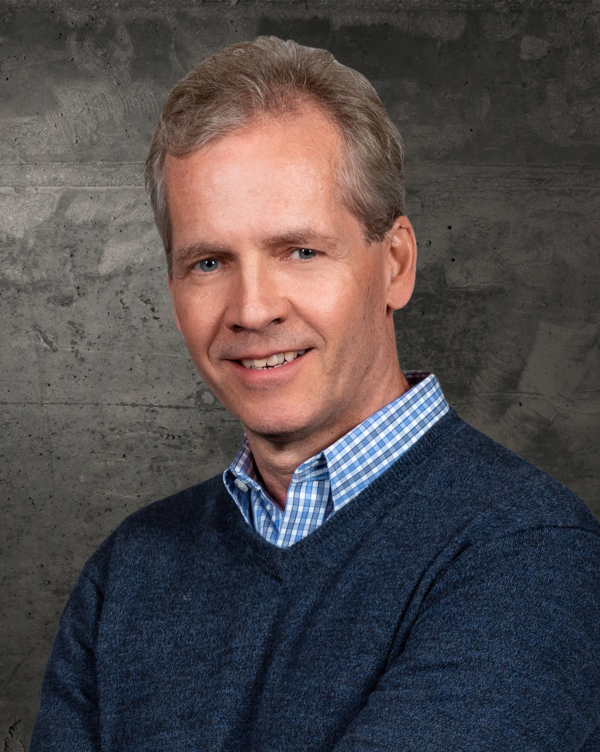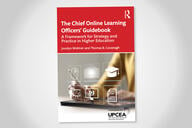You have /5 articles left.
Sign up for a free account or log in.
On Jan. 23, 2U announced that Kees Bol had been appointed the company’s new CEO. After looking at Bol’s LinkedIn profile, it was clear to me he’s had an interesting alt-academic career journey. I had a few questions about his path and his vision for 2U’s future. He graciously agreed to answer them. Full disclosure: I am an (unpaid) member of the 2U University Partner Advisory Council.

Q: Let’s start with your educational and professional background. How does someone with a Ph.D. in physical chemistry (Harvard, 1996) end up following a career primarily in finance and marketing? And then how does someone with a career in finance and marketing end up as CEO of an online learning company?
A: Thank you for having me, Josh. Like many people’s careers, it wasn’t a straight shot. If you asked me when I was seven, I was convinced I would be a chess champion. I competed for the Dutch national title, and I was good. So good that if I played my 7-year-old self today, I would be absolutely crushed. But as a teenager, I found my passion in science. Much in the same way chess appealed to my analytical young brain, science introduced me to research and the process of using data to answer complex questions. If there is any common denominator in my career path, it’s probably the attraction to using research to solve problems.
Fast-forward many years to Harvard, where I earned my Ph.D. in physical chemistry and assumed I’d pursue a career in academia. I loved my time there, but when I finished the program, I was ready for a change. Somewhat by chance, I landed at McKinsey & Company, where I consulted for about six years back home in the Netherlands. I wasn’t sure about it when I took the job, but I ended up really enjoying applying my problem-solving skills to a very diverse set of business challenges. From there, I made my way into various finance and marketing leadership roles at companies like Capital One. After nearly a decade in financial services, I felt pulled toward work that could make a deeper, more lasting impact on people’s lives.
That’s when I found Strayer Education. That first job in education was such an eye-opener. I found myself reflecting on my own path and how my academic training had shaped my career in ways I never expected. I also saw firsthand how education creates opportunities—not only for individual students, but for their kids, their families and their communities.
It was clear I wanted to make education my life’s work. After Strayer, I moved to Pearson and then became CEO of Boundless Learning—another online program manager—where I led efforts to help turn the company around.
Throughout my career in education, particularly at Pearson and Boundless, I always kept an eye on 2U. They were consistently out front and setting the pace with an impressive roster of top-tier partners. They also had the size and scale to make the biggest impact for institutions and learners. So, when the opportunity came up to join the team here, it made perfect sense. I like a challenge—it’s the science-meets-business part of my persona, maybe. But I also believe 2U will continue to be the front-runner in the space, driving the industry forward and finding new ways to expand access to quality education. That’s exactly the kind of challenge I’m here for.
Q: 2U has faced significant challenges in recent years. What’s your top priority as CEO, and what do you plan to have 2U do differently? How do you plan to guide the company forward in a way that shows university partners 2U is resilient and reliable?
A: In my first few weeks at 2U, my immediate focus has been on listening and learning how we got to where we are today—what’s working and what’s not. It’s confirmed what I expected: 2U has all the ingredients required to be successful. Given these foundational strengths, my main job and top priority is to create the circumstances in which our talented team can successfully execute a winning strategy—by eliminating noise and distraction and creating the space to focus on what matters most.
That includes further growing and strengthening the deep partnerships we have with many of the world’s top universities. We have a full set of best-in-class products and services spanning both degree and nondegree programs, and we will invest to keep those at the cutting edge. We’re also recommitting to using market insights and driving innovation to help our partners stay ahead of the curve. Those have always been 2U’s greatest strengths. Yes, we help partners deliver their programs day to day, but we must also help them to see around corners, anticipate what’s next in education and bring them the latest and best innovations across the learner experience.
If we do this right, we will continue to add value to our partnerships beyond what universities can do by themselves, and our partnerships—and thus our business—will thrive.
Q: The OPM market has changed over time, and 2U’s value proposition to universities is different than it was when the company first began. For example, institutions now have more in-house capabilities and options when it comes to designing, marketing and supporting online programs. Why should universities still partner with an external company like 2U to help implement an institutional online learning strategy?
A: The landscape has definitely evolved since 2U started. Universities have built impressive internal capabilities, and they should be proud of that evolution. But I actually think this makes partnerships more valuable, not less—just in a different way than before.
When 2U began, we would essentially handle everything digital. Today, it’s about combining strengths. Universities bring deep academic expertise and growing digital capabilities. What we bring is unmatched scale, specialized technology and offerings across the full educational spectrum.
This scale translates into concrete advantages for our partners. Take 2U’s placement network in licensure-based disciplines, such as education and health care. We’ve facilitated over 100,000 placements for students across all 50 states. That’s not something any single institution could efficiently build or maintain on its own, and no other company in this space can match [it]. Similarly, the edX platform gives our partners access to millions of learners worldwide and rich data about what those learners want and need.
Beyond these unique assets, we’re also creating more flexible partnership models that respect each institution’s unique goals at service and investment levels tailored to their needs. We have more options than ever to meet partners where they are.
But perhaps most importantly, we help universities navigate the future of higher education. It takes dedicated effort and investment to identify emerging opportunities, test new approaches and pivot quickly when needed. That’s where we come in. Our size and scale give us the ability to look across the market and portfolio and see trends, opportunities and market signals. Our opportunity is to use these insights and data to create actionable strategies for our partners.
So to me, the question isn’t whether universities can do some of these things on their own—many absolutely can. The question is whether we can be better together. Our most successful partnerships are with universities that see us as a force multiplier, not a replacement. With the industry’s most comprehensive set of capabilities and longest track record, we can help partners move faster, reach further and create more impact than either of us could alone. 2U has long been the premier provider in this space, and I’m confident that, together with our partners, we will continue to innovate and deliver high-impact education at scale.




